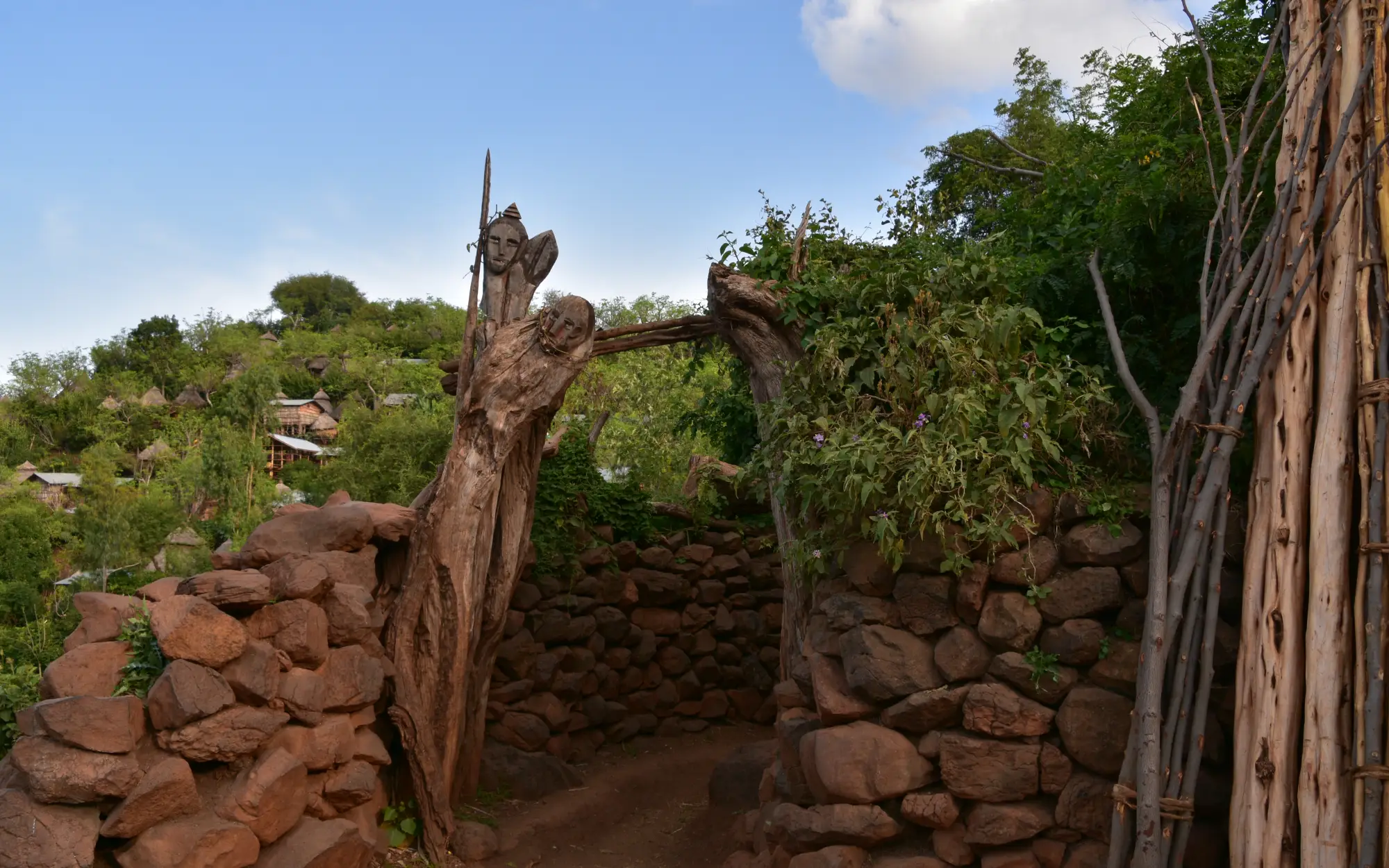
Konso, a living culture kept intact for more than 400 years
Nestled in the arid hills of southern Ethiopia lies the Konso Cultural Landscape, a UNESCO World Heritage site that is as much a testament to human resilience and creativity as it is a vibrant, living cultural heritage. The Konso people, known for their sophisticated agricultural techniques, unique social structures, and striking totemic art, have thrived in this challenging environment for over 400 years, forging a culture that is as intricate as it is captivating.
The Konso Cultural Landscape is a remarkable example of a living cultural tradition interacting with its environment. The Konso have adapted to their rugged, hilly terrain through ingenious terracing and soil conservation techniques, turning an otherwise inhospitable landscape into a patchwork of lush, productive gardens. These terraces are not only a testament to the Konso’s agricultural skills but also a reflection of their deep respect for the land.
One of the most visually striking aspects of Konso culture is the Waga sculptures. These totemic wooden statues are carved in memory of respected community members and depict the deceased, their families, and symbols of their achievements. The Waga sculptures are a poignant reminder of the Konso's strong connection to their ancestors and the importance of remembrance in their culture.
The Konso society is organized into tightly knit communities known as Kala, which are further divided into smaller units called Paleta. This complex social structure is not only a means of efficient resource management but also fosters a strong sense of community and cooperation. The Kala and Paleta system is a living example of the Konso’s social ingenuity, enabling them to thrive in a challenging environment.
Central to Konso culture are the Moras, communal spaces where young men of the community live, learn, and socialize. The Moras serve as a cultural and educational hub, where knowledge, skills, and social norms are passed down through generations. The transition of young men from one age-set to another is marked by elaborate rituals, which are a significant part of Konso cultural life.
The agricultural practices of the Konso are a marvel of traditional knowledge and ecological understanding. Their terraced fields, which contour the hillsides, help prevent soil erosion and maximize arable land. The Konso’s crop rotation and mixed farming practices not only sustain the soil's fertility but also provide a varied diet for the community.
The Konso villages, known for their distinctive stone walls and labyrinthine layouts, are a symbol of the community's unity and their historical need for defense. These fortified settlements, with their central compounds and communal spaces, reflect the Konso’s communal spirit and their ability to adapt to both social and environmental challenges.
In the heart of Southern Ethiopia, the Konso Cultural Landscape is a living museum, where ancient traditions, ingenious agricultural practices, and striking totemic art blend seamlessly, offering a vivid glimpse into the enduring spirit of the Konso people.

The Waga of the Konso, wooden sculptures dedicated to their heroes.
Konso artistry extends beyond the Waga sculptures. Their weaving and pottery are integral parts of Konso cultural identity. The intricate designs of their textiles and the utilitarian beauty of their pottery are not just functional; they are imbued with cultural significance and aesthetic value, reflecting the community's artistic heritage.
Festivals and ceremonies play a crucial role in Konso culture, marking significant moments in the agricultural calendar and the life cycle. These events, characterized by vibrant music, dance, and elaborate rituals, are not only a time for celebration but also a means of strengthening community bonds and reaffirming cultural identity.
Like many indigenous cultures, the Konso are navigating the challenges of modernity. Balancing the preservation of their unique cultural heritage with the demands of a changing world is a complex task. Efforts are being made, both by the Konso community and external organizations, to ensure that this rich cultural tapestry is not lost.
Tourism in the Konso Cultural Landscape offers a unique opportunity for visitors to experience an ancient and living culture. Engaging with the Konso people, witnessing their daily lives, and learning about their traditions provide a deeper understanding of the richness and diversity of human cultures.
A visit to the Konso Cultural Landscape is more than just a trip to a remote part of Ethiopia; it is an immersive experience into a culture that has maintained its distinct identity for centuries. It is an opportunity to witness how the Konso people have harmoniously blended their cultural practices with the natural environment, creating a landscape that is as culturally rich as it is agriculturally productive.
In conclusion, the Konso Cultural Landscape is a testament to the enduring spirit of the Konso people. Their sophisticated agricultural practices, unique social structures, and rich artistic traditions make the Konso not just a community but a living, breathing cultural landscape. It is a place where history is not just remembered; it is lived every day, offering a rare glimpse into a way of life that is both ancient and remarkably relevant in our modern world.
Welcome to Ethiopia!
Share this Sight with: